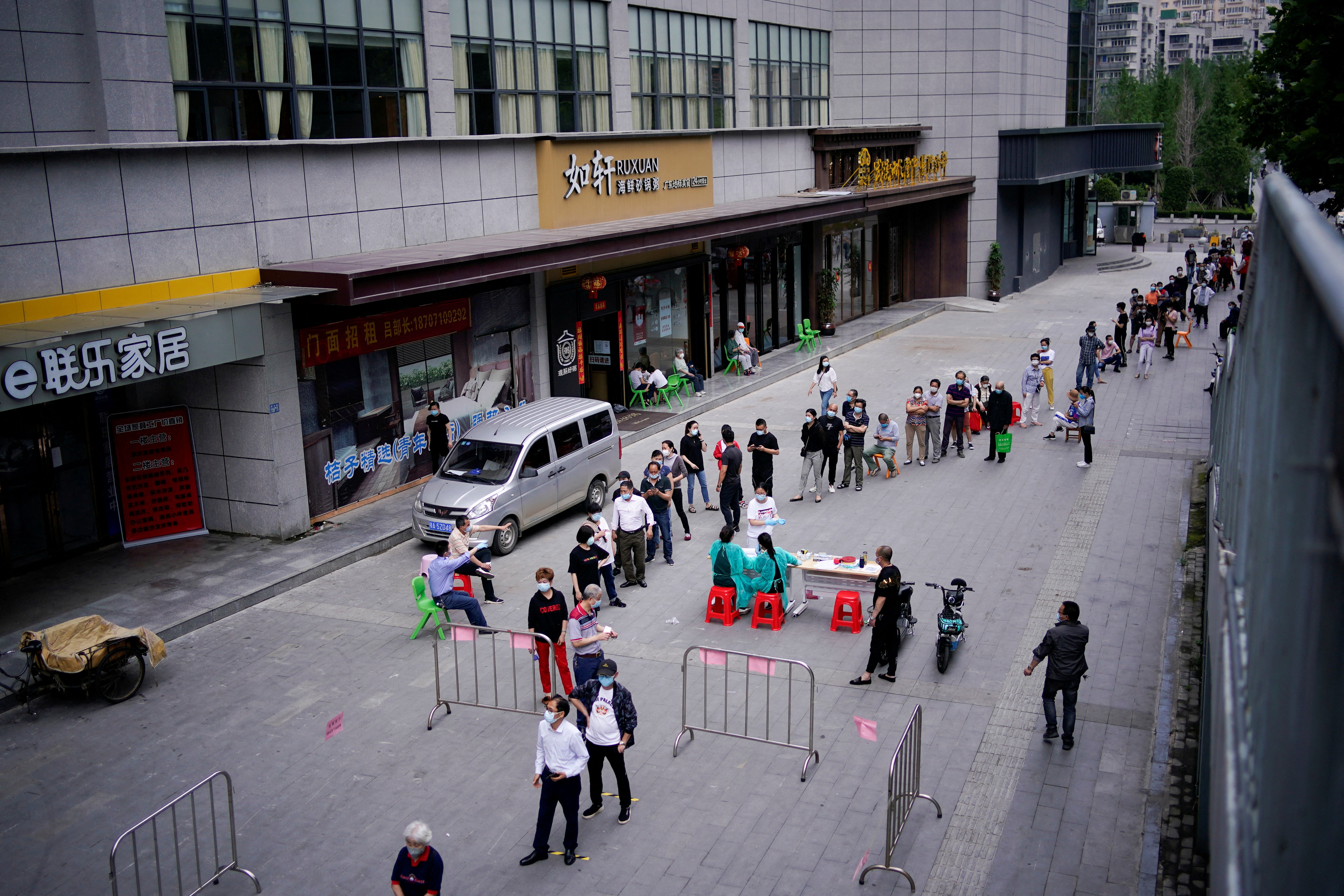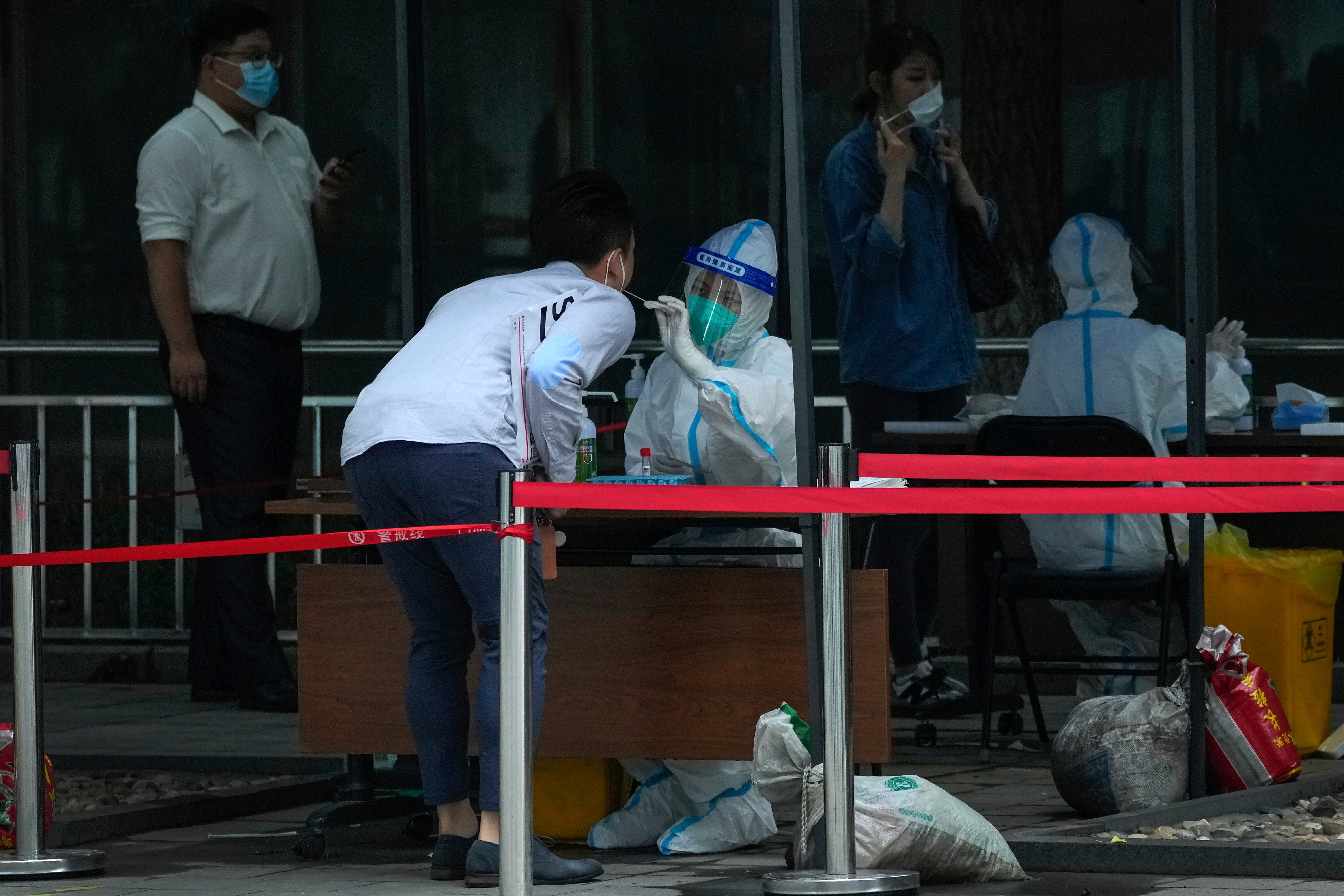Wuhan: One million residents of Covid origin city back in lockdown amid fresh cases
Jiangxia district in Wuhan to be shut for three days
Your support helps us to tell the story
From reproductive rights to climate change to Big Tech, The Independent is on the ground when the story is developing. Whether it's investigating the financials of Elon Musk's pro-Trump PAC or producing our latest documentary, 'The A Word', which shines a light on the American women fighting for reproductive rights, we know how important it is to parse out the facts from the messaging.
At such a critical moment in US history, we need reporters on the ground. Your donation allows us to keep sending journalists to speak to both sides of the story.
The Independent is trusted by Americans across the entire political spectrum. And unlike many other quality news outlets, we choose not to lock Americans out of our reporting and analysis with paywalls. We believe quality journalism should be available to everyone, paid for by those who can afford it.
Your support makes all the difference.Almost one million residents on the outskirts of Wuhan, where the first cases of Covid where identified, have been put under lockdown.
The resident of Jiangxia district in Wuhan announced on Wednesday that its main urban areas would be shut for three days for “temporary control measures” after four asymptomatic cases of Covid-19 cases were identified.
All public transport, including bus services, entertainment venues, such as bars, cinemas and cafes, and marketplaces have been shut down. Religious gatherings of people were also banned. Authorities have also directed all tourist attractions in the area to halt their operations.
Authorities said the measures were imposed to “further reduce the flow of people, lower the risk of cross-infection and achieve dynamic zero-Covid in the shortest time possible”.
People have been barred from leaving their homes and compounds in eight high-risk and medium-risk category neighbourhoods.
The latest Covid restrictions underscore how the world remains far from normalcy amid Covid more than two years after the Wuhan and rest of China was sealed off with strict measures to contain what was then believed to be a mysterious fever among the masses.

The move has sparked concerns of widening restrictions even as the lockdowns remain contained to just one district amid the country’s controversial “zero Covid” strategy which includes mass testing, strict isolation rules and local lockdowns to stem even a single case from communities.
The residents of Wuhan - a city of 11 million people - are facing restrictions similar to 2020 for the first time when it attracted global attention for the flare-up of the first cases of the contagious novel virus and sweeping restrictions.
Ever since, the city has been blamed for origin of virus with researchers across the globe trying to ascertain the likely source of the novel coronavirus that has so far claimed over 6.4 million lives.
The two latest studies published on Tuesday in the journal Science have provided more evidence to substantiate the theory that the Huanan market in Wuhan, China, was the early epicentre of the Covid-19 pandemic.
China now has 626 new coronavirus cases as of 27 July, the National Health Commission said on Thursday, taking the tally to 229,185 cases with symptoms.

The southern manufacturing hub of Shenzhen is also under scanner after 12 new cases were reported in the city, taking the tally of total cases there to 150 since July. The cases have prompted some of the biggest Chinese companies to operate in a bubble or closed loop system for seven days amid concerns of distractions in global supply chain in case of rise in cases.
Some 100 biggest companies, including phone maker Foxconn and oil producer Cnooc, have been asked by government to conduct operations in a closed loop in which employees will have no contact with the people beyond the office.
Elsewhere, China‘s capital Beijing reported no new local cases for the third straight day while Shanghai reported three new local symptomatic cases, compared with two a day earlier, local government data showed.
Last month, China’s financial capital Shanghai - a city of nearly 25 million people - emerged from a two-month lockdown that caused major anger in the public and disruptions to businesses.
Join our commenting forum
Join thought-provoking conversations, follow other Independent readers and see their replies
0Comments